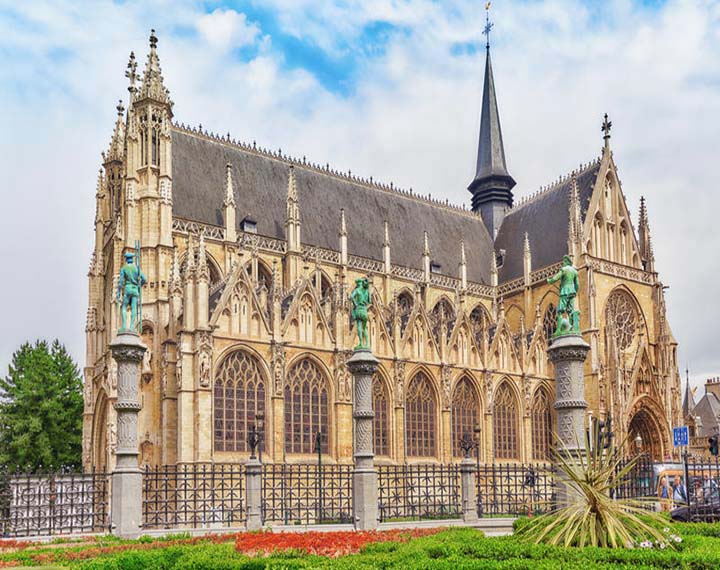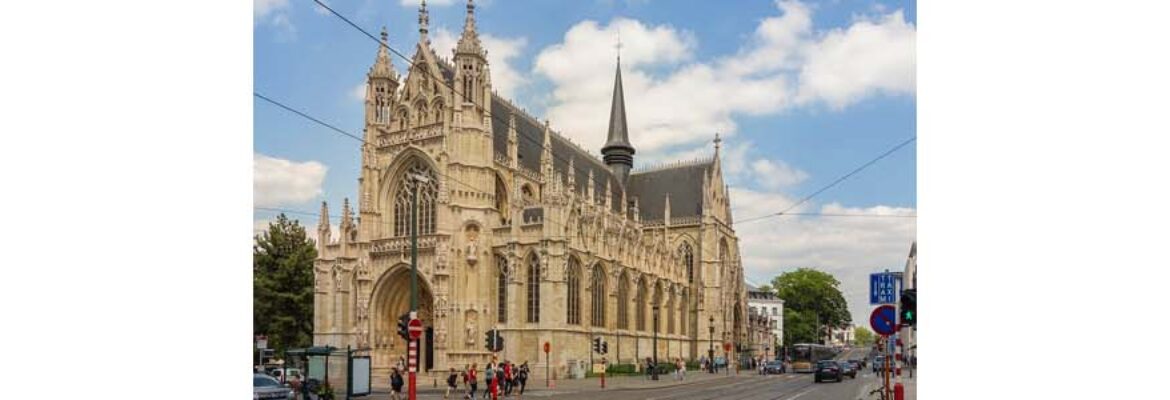
Church of Our Lady of Victories at the Sablon
The modest chapel, built in 1304 by the Guild of Crossbowmen, was the first known religious building on the site of the current church. Home to a miraculous statue of the Virgin, it quickly became a place of pilgrimage. Over the course of the 15th century, the site was expanded considerably. From the 19th century, the exterior was extensively restored by, among others, architects A. Schoy, J.-J. Van Ysendijck and M. Van Ysendijck. Inside, the pure lines of the original immense three-part nave have been retained. Two Baroque chapels were built on either side of the choir in 1651 by architect Lucas Fayd’herbe. The left chapel, dedicated to Saint Ursula, contains the tombs of Prince Lamoral II of Thurn und Taxis and his wife Anne-Françoise de Hornes as well as many other family members. Other funerary monuments of interest include that of the French poet Jean-Baptiste Rousseau, to the left of the door of the south transept. The same transept also features a stained glass window depicting King Albert I and Queen Elisabeth, accompanied by their patron saints, Saint Albert of Louvain and Saint Elisabeth of Hungary, with the ruins of Nieuport and Ypres behind them, sad reminders of the hardship of the First World War. A plaque on one of the nave’s columns recalls that Paul Claudel used to often come to pray here. The Church of Our Lady of Victories at the Sablon is also the setting for feasts, anniversaries and commemorations for various fraternities and is the starting point for the famous historical Ommegang procession.


